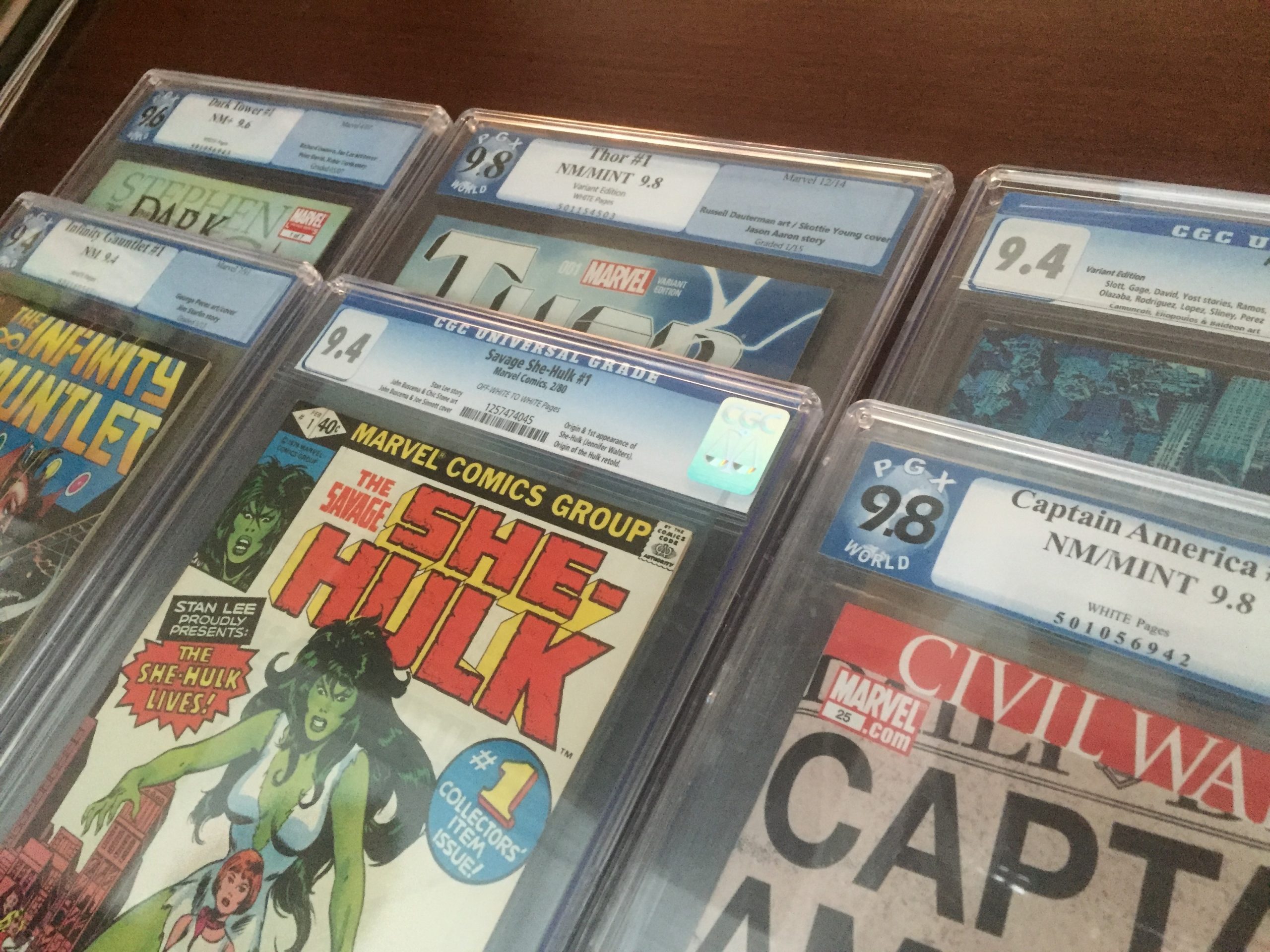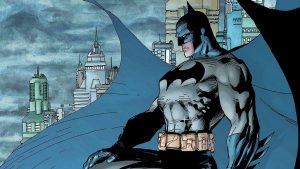Comic Book Grading
You’ve got boxes and boxes of comic books and think they’re all worth big money, and they might be, but not every comic is equal. The condition of the issue has a huge influence on its value. Lots of factors, and a healthy dose of subjectivity, are at play and exact grades often vary some from person to person.
Nonetheless, if you’re a comic book collector, or purchasing larger priced issues, it’s a good idea to know how grading works and what you’re investing in, as well as what others are willing to pay for your comics should you decide to sell them.
Below is the major comic book grading scale used universally around the industry.
Comic Book Grading Scale
There are eight main grades in the comic book grading scale.
- Mint (MT) — The very best.
- Near Mint (NM)
- Very Fine (VF)
- Fine (FN)
- Very Good (VG)
- Good (GD)
- Fair (FA)
- Poor (PO) — The very worst.
This has been the main grading scale used for decades.
It eventually expanded to more accurately describe nuances in conditions. A forward slash (/) denotes a comic as being between grades. For example, “Fine / Very Fine” (“FN/VF”) notes a book as being between “Fine” and “Very Fine.” Get it?
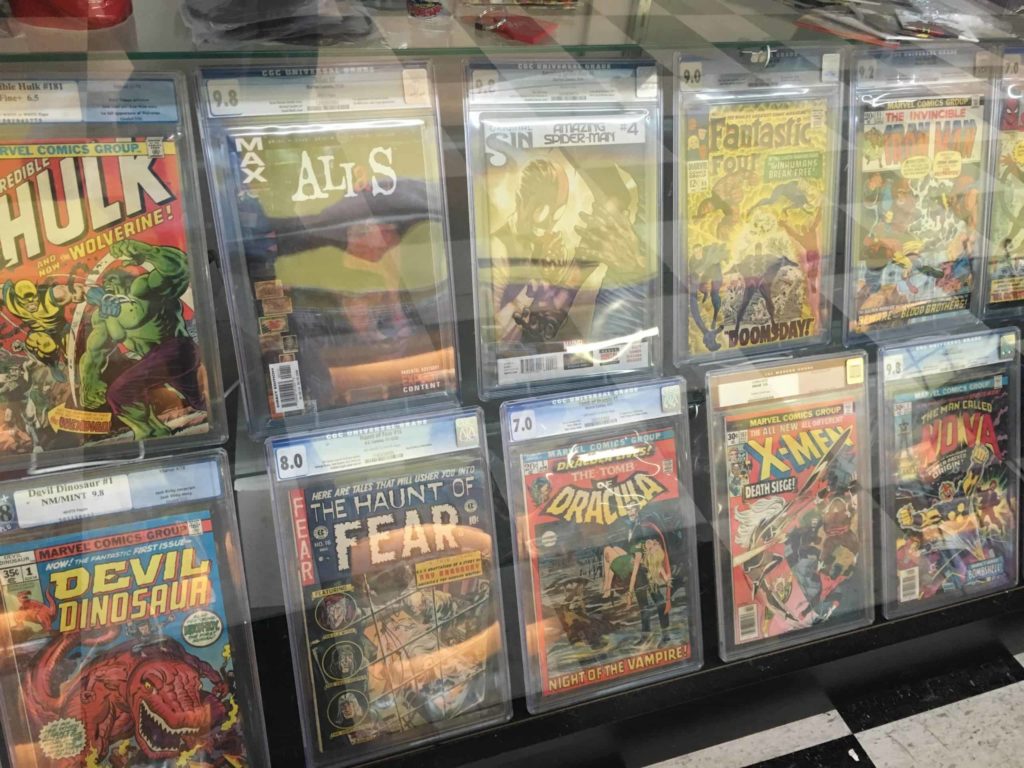
Next, we have plus (+) and minus (-) signs to note a book is slightly above or below a specific grade. This refines the grade to note a “Fine+” is better than a “Fine,” and a “Fine / Very Fine” is better than a “Fine+,” a “Very Fine -” is better than a “Fine / Very Fine”, a “Very Fine” and so on. It can get confusing, thankfully the addition of number grades helps keep things more clear.
A scale of 0.5 (terrible) to 10.0 (gem) gives us the most modern system of comic book grading. Zap-Kapow Comics uses this scale to show raw prices for comics, grading services such as CGC, CBCS, and PGX use the same scale and criteria when “slabbing” comic books in their protective cases.
- 10.0 Gem Mint — The very best. Perfect in every way.
- 9.9 Mint
- 9.8 Near Mint / Mint
- 9.6 Near Mint+
- 9.4 Near Mint
- 9.2 Near Mint-
- 9.0 Very Fine / Near Mint
- 8.5 Very Fine+
- 8.0 Very Fine
- 7.5 Very Fine-
- 7.0 Fine / Very Fine
- 6.5 Fine+
- 6.0 Fine
- 5.5 Fine-
- 5.0 Very Good / Fine
- 4.5 Very Good+
- 4.0 Very Good
- 3.5 Very Good-
- 3.0 Good / Very Good
- 2.5 Good+
- 2.0 Good
- 1.8 Good-
- 1.5 Fair / Good
- 1.0 Fair
- 0.5 Poor — The very worst. Might not even have a cover and missing pages.
This 10-point grading scale is the most widely used now, and you wouldn’t see a book graded “8.3”. It is either a 8.0 or 8.5 and that’s it.
So that’s the modern scale. But how do you arrive at these grades? What makes a 9.4 different from an 8.0? Read on …
What To Look For When Grading
To properly grade a comic book, you need to view it outside of any bag or holders that contain it, and believe it or not, you’ll end up using all of your senses (sight, touch and smell). Good lighting on a flat surface with no food or drink anywhere near you is recommended.
Handle the book very carefully with clean and dry hands. Some people even use cotton gloves. The main thing is prevent dirt, oil, etc. that might be on your hands from getting on the comic book.
If you’re opening a bag and boarded comic, it is best to completely remove any tape from the bag and place it somewhere away from the book so there is no chance of it coming in contact with it. Tape + paper comic books usually equals lost grades and damaged books.
When viewing the book, use a desk lamp or other bright light source so you can clearly see every little detail on the comic book. Move the book around under the light to see the cover, front and back. You’re looking for gloss on the cover reflected by the light. Books with wear have lost some (or all) of their gloss. Higher the remaining gloss, the higher the grade.
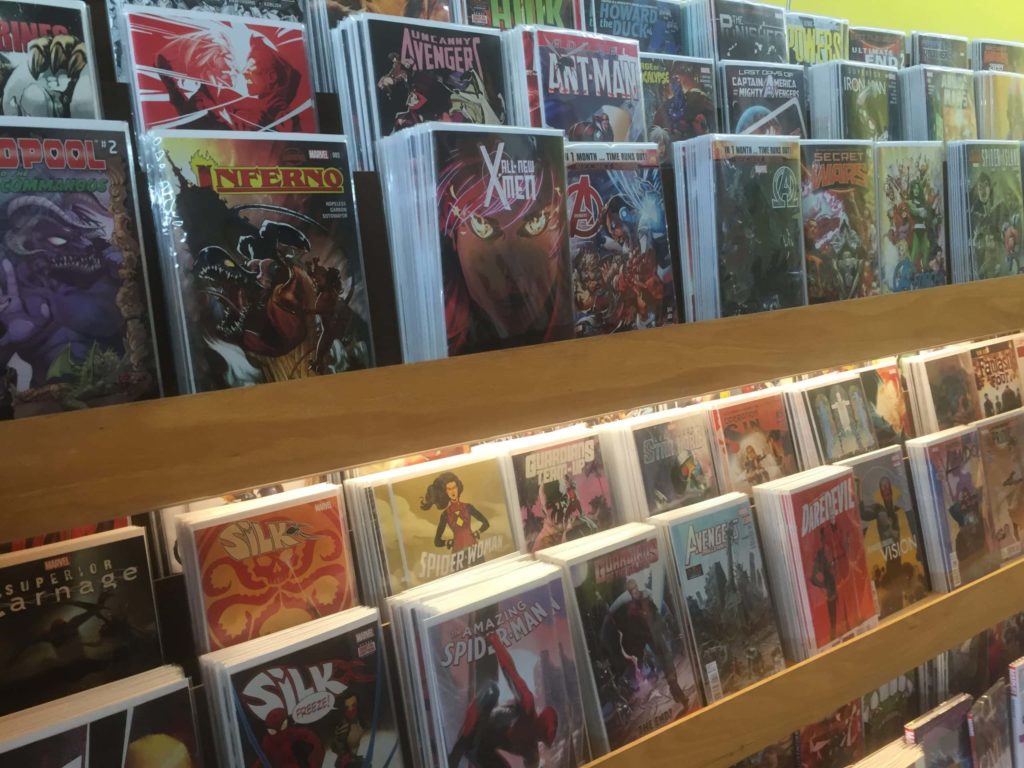
While you’re looking for glass, also look for defects. You should be able to see light creases or folds, stains, dimples or other types of damage to the cover. Obviously the more of these you find, the lower the grade goes.
Inspect the edges of the cover and the corners. Look over the spine very closely. This is one of the top areas to show wear, including “spine ticks” where the rigidness of the spine is broken or cracked, usually causing a dimple along the edge. Big grade killer. Also look closely at the staples. Books that have been water damaged, or even just exposed to humidity, may have corroding staples that cause the paper to turn color. You’ll also want to look for tears or separation of the cover or pages from the staples.
When you open the comic book, be careful if you know you are dealing with an old or potentially brittle issue. It is very easy to separate the cover from a staple if it is almost there already, so be aware of any issues there. Staples are often misaligned, making it a lot easier to cause damage.
Inspect the staple areas inside the book looking for the same issues you did on the cover. Also check to see if the staples are original. They should be flat on the inside of the book instead of crimped like staplers from an office stapler are. Staples often get added or replaced to reinforce a book that is falling apart. This is called a “restored” book and has a whole other grading system that has some severe limits on what can be achieved.
Next, evaluate the paper quality. Paper typically has sulfur or other substances that cause it to turn color as it gets older. You see what the paper looks and feels like. High grade books have white or off-white paper. Otherwise, the paper will be yellow or tan to brown. Very old paper may even be brittle.
Also take note of the paper’s smell. Is it fresh or musty? Water damaged books will have a very strong musty smell, but you will likely have seen the obvious stains before you notice any smell. Paper can also be cleaned in order to make it look white, another restoring process. You’ll be able to smell a bit of the chemicals used, such as bleach, if a book was cleaned in this way.
Inside the comic, look for obvious problems such as handwriting, tears and creases, as well as for pencil writing that has been erased. Always moving the book around under your light source to see these types of slight issues. Also look for any clipped coupons or missing pages.
Comic Book Grading Definitions
Here are some detailed notes on what each grade entails for a comic book.
Mint
This is a perfect or near perfect book across the board. Very rare in any age. These books look like they were printed yesterday with zero damage or defects. High gloss, fresh looking ink, no odors. They’re almost unicorns. Even the new comics you pick up on Wednesdays from your local comic shop have gone through so much during shipping and handling to get to the store they’re generally Near Mint at best.
Near Mint
This grade should also look near perfect at a glance, but may have very small and subtle defects such as corners that are not perfectly square, printing that is slightly misaligned, or maybe even slight off-white pages. Books that are “Near Mint” have no obvious problems when you see them. It will takes a closer inspection to find any defects present, and those will be very, very minor and hard to notice.
- Cover is be glossy and new.
- Pages are white or nearly white, and will feel new.
- Spine is firm and flat, stress marks are very minor and hard to see.
- Date stamps and written dates are usually acceptable providing they are not overwhelming the cover art.
Very Fine
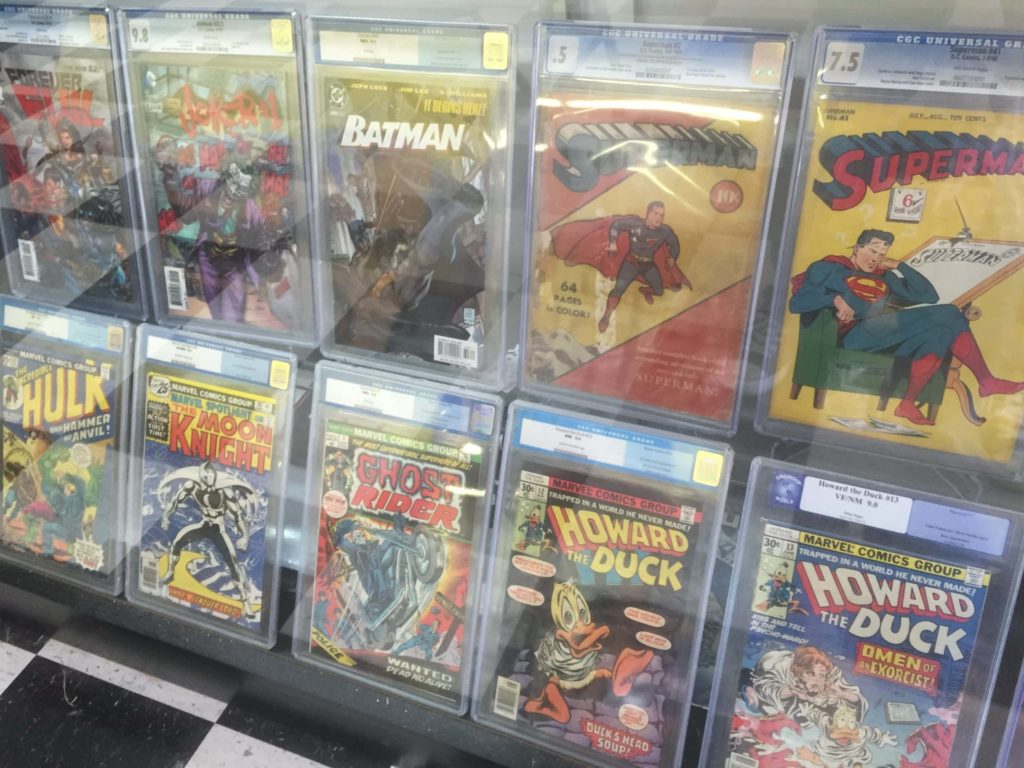
A book in Very Fine grade may not look like it just came off the printing press, but it will definitely be an attractive and well taken care of book.
- Cover may have minor wear, but will still have a lot of gloss and will be free of dirt.
- Pages can be off-white or even slightly yellow, but are still attractive and feel nice.
- Spine may have some stress marks, but is still firm and mostly flat.
- A small fold or crease no more than one-quarter of an inch is allowed. Tiny indentations or slight bends are acceptable.
Usually the degree of small defects make the difference between a VF or a VF+. If while examining the book you think it’s very nice, and close to a NM, you probably are thinking of a range between VF+ to NM-. Judging the severity of each of minor defect will help you decide if it’s a 8.5, 9.0 or a 9.2. Likewise, if “Fine” crosses your mind but you are thinking it is closer to “Very Fine,” then you are likely dealing with a grade in the 6.5 to 7.5 range.
Fine
A book in Fine condition should be attractive and still very desirable to any collector. It may have some defects, but the comic should still have fantastic eye appeal. This means any defects should be few and far be, and not very severe or noticeable. Fine comics can have one major defect that doesn’t negatively impact the overall eye appeal. For example, it could have a small tear as long as it is difficult to see without handling. If the tear is obvious and impacts the design and appeal of the cover, it should be downgraded. Overall, a Fine book is going to appear very appealing.
- Cover can show some wear, but should still have enough gloss and show little dirt to be very attractive. It may have minor tears or creases, but should not have so many they detract from its overall beauty.
- Pages may no longer be off-white. They may be yellowish or light tan, but still do not show too much age.
- Spine may have some visible stress lines, or possibly even a mild roll, as long is it doesn’t misalign the book too much. The cover can be loose from one staple, but not both.
- Any major defects must be limited and not impact the book’s eye appeal. This can mean the difference between a surface tear where some of the interior paper of the cover is visible, and a clean tear where you can barely see it at all. A book that would otherwise grade VF often is downgraded because of a defect like a spine split, tear or inconspicuous writing.
Very Good
A book in the Very Good grade range will be obvious that it has been well read and usually has multiple problems. It may still be fairly good looking to a collector, especially for expensive, older comic books that may be hard to find otherwise in this grade. Problems will not be so severe you focus on them. For example, a spine roll shouldn’t make the whole book look crooked. Water damage, if present, should barely be noticeable at all. If a chunk is missing from the cover, it shouldn’t be more than one-quarter inch in size, and should be somewhat inconspicuous. Major defects are acceptable, but still need to be limited and not distracting.
- Cover will show definite wear and have very little or no gloss left. There may be some small stains, but not too many. There may be multiple creases, or a small piece missing, but overall the cover should still look attractive and complete.
- Pages may be yellowish, tan or even light brown but should still feel okay to touch. You should not feel afraid of causing damage by handling the pages. They shouldn’t have any major tears or writing on them. Minor tears and writing are okay, but should be few and only in the margins of the comic and not cover any of the art.
- Spine may be split some or detached from a one staple, but the cover must still be otherwise attached.
- Major defects are acceptable as long as they do not detract from looking at the book and reading it.
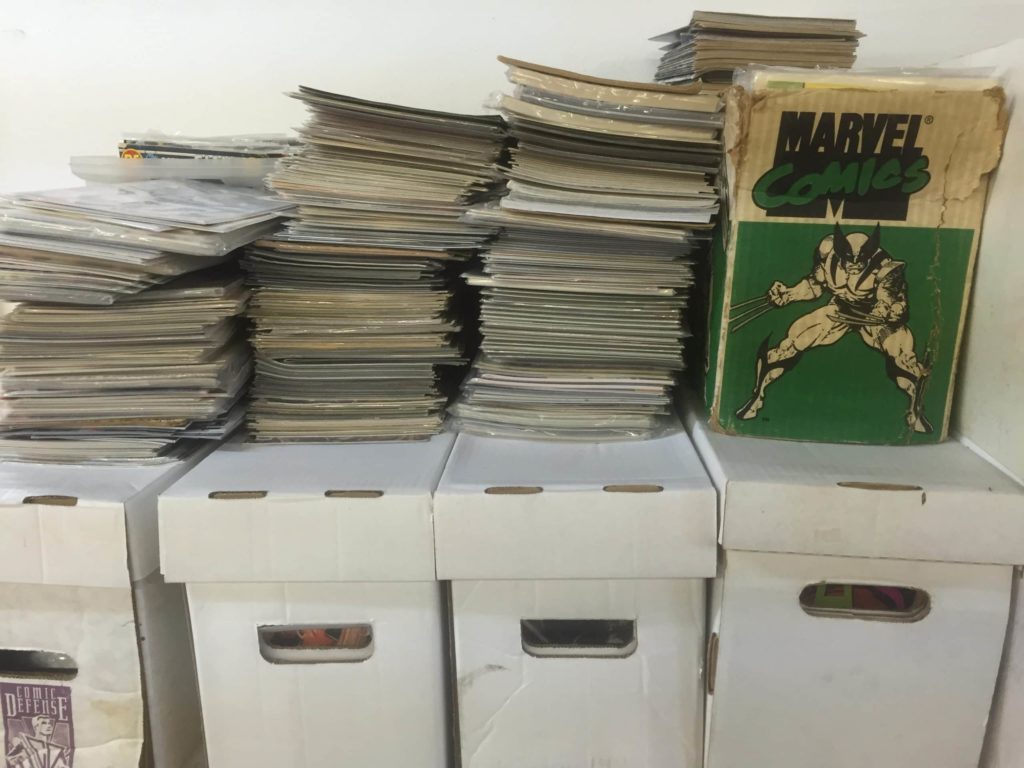
Good
A book in the Good grade can still be somewhat attractive and collectible, but will have lots of problems from the grades above that are more severe and numerous. If you are at least a little distracted by these problems, it’s not a Very Good book and edge your grade down to Good. There may be more wear and dirt on the cover, it may have numerous creases or wrinkles, but if it is distracting it’s Good, not Very Good. Very Good is where picky collectors tend to draw the line unless it is a very expensive book. Defects will simply be too numerous or too severe for them to give anything below Very Good consideration. That said, a Good book will still be intact with all its pages and completely readable.
- Cover will show a lot of wear and may have some creases or fair amount of dirt.
- Pages may have some tears or a small pieces missing, but the book is still readable. Missing pieces of pages can’t interrupt the story, and no full pages can be missing or too fragile to turn.
- Spine may not be flat, and could be a bit limp or have a roll.
Fair
A book in the Fair grade has problems that are more than a little distracting and pretty obvious to anyone glancing at it. The problems will be so bad they pull attention away from any beauty of the book. Overall Fair books are worn and ragged, although still all in one piece.
- Cover may have a lot problems including heavy folds or large chunk missing. It may even be detached from the staples.
- Pages will be fairly poor in quality, worn and/or aged with soiling, staining and chunks missing. Coupons clipped out are acceptable, but not a panels effecting the story.
- Spines may be completely split.
Poor
The problems with a book in the Poor grade are usually so severe that it may no longer have any value to collectors left at all. Some of the cover, or even some of the pages, may be missing. There are heavy stains, mildew or other problems that keep the comic from being very useful to anyone.

